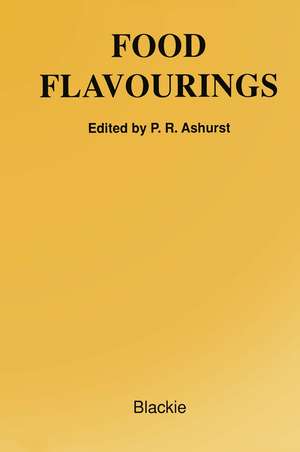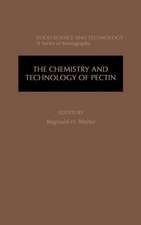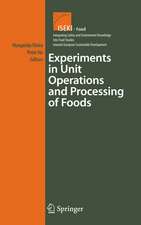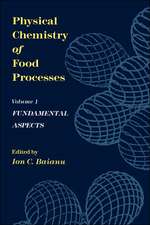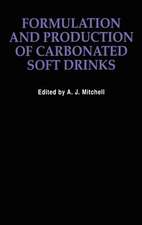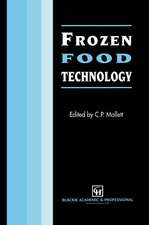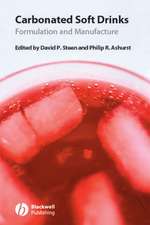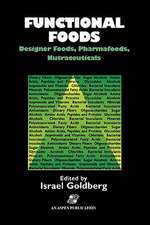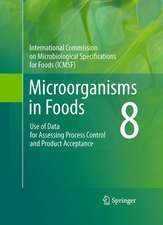Food Flavourings
Autor Philip R. Ashursten Limba Engleză Paperback – oct 2011
Preț: 389.11 lei
Nou
Puncte Express: 584
Preț estimativ în valută:
74.47€ • 77.46$ • 61.48£
74.47€ • 77.46$ • 61.48£
Carte tipărită la comandă
Livrare economică 14-28 aprilie
Preluare comenzi: 021 569.72.76
Specificații
ISBN-13: 9781461278382
ISBN-10: 1461278384
Pagini: 328
Ilustrații: XIV, 310 p.
Dimensiuni: 152 x 229 x 17 mm
Greutate: 0.44 kg
Ediția:2nd ed. 1991
Editura: Springer Us
Colecția Springer
Locul publicării:New York, NY, United States
ISBN-10: 1461278384
Pagini: 328
Ilustrații: XIV, 310 p.
Dimensiuni: 152 x 229 x 17 mm
Greutate: 0.44 kg
Ediția:2nd ed. 1991
Editura: Springer Us
Colecția Springer
Locul publicării:New York, NY, United States
Public țintă
ResearchCuprins
1 Introduction.- 1.1 General Introduction.- 1.2 Markets.- 1.3 Products.- 1.4 Emerging Opportunities.- 1.5 The Future.- 1.6 Legislation.- 1.7 The European Flavour Directive.- 1.8 Council Decision.- 2 Essential Oils.- 2.1 Introduction.- 2.2 The Production of Essential Oils.- 2.3 Further Processing of Essential Oils.- 2.4 The Uses of Essential Oils.- 2.5 The Composition of Essential Oils.- 3 Oleoresins, Tinctures and Extracts.- 3.1 Introduction.- 3.2 Plant Materials.- 3.3 Solvents.- 3.4 Tinctures.- 3.5 Oleoresins.- 3.6 Absolutes.- 3.7 Extraction with Carbon Dioxide as a Solvent.- 3.8 Summary.- 4 Fruit Juices.- 4.1 Introduction.- 4.2 Fruit Processing.- 4.3 Specialised Fruit Processing.- 4.4 Products and Packaging.- 4.5 Product Specifications.- 4.6 Volatile Components of Fruit Juices.- 4.7 The Uses of Fruit Juices in Flavourings.- 4.8 Summary.- 5 Synthetic Ingredients of Food Flavourings.- 5.1 General Aspects.- 5.2 Synthetic Flavouring Ingredients.- 5.3 Synthetic Flavour Ingredients and the Future.- 6 Beverage Flavourings and Their Applications.- 6.1 Introduction.- 6.2 Categories of Beverages.- 6.3 Types of Flavourings for Beverages.- 6.4 Methods of Extraction, Solubilisation and Concentration of Flavourings.- 6.5 Beverages Based on Ginger.- 6.6 Formulation of Beverages.- 6.7 Summary.- 7 The Flavouring of Confectionery.- 7.1 Introduction.- 7.2 Basic Confectionery Types, Recipes, Inherent Flavours.- 7.3 Flavours from Ingredients.- 7.4 Flavours Developed During Processing.- 7.5 Selection of Flavourings.- 8 Flavourings for Bakery and General Use.- 8.1 Ingredients.- 8.2 Bakery Products.- 8.3 Bakery Fillings.- 8.4 Summary of Flavouring Characteristics.- 9 Dairy Flavourings.- 9.1 Introduction.- 9.2 Milk and Cream.- 9.3 Yogurt and Fermented Products.- 9.4 Butter.- 9.5 Cheese.- 9.6Manufacturing Considerations.- 9.7 Conclusion.- 10 Process Flavourings.- 10.1 Introduction.- 10.2 Research into Beef Flavour.- 10.3 Creating a Process Flavouring.- 10.4 Applications of Process Flavourings.- 10.5 The Safety Question.- 10.6 Process Flavourings and the Future.- Appendices.- Appendix I: Composition of Lemon and Orange Oils.- Appendix II: Botanical Classification of Fruits.- Appendix III: I.O.F.I. Guidelines for the Production and Labelling of Process Flavourings.- References.
